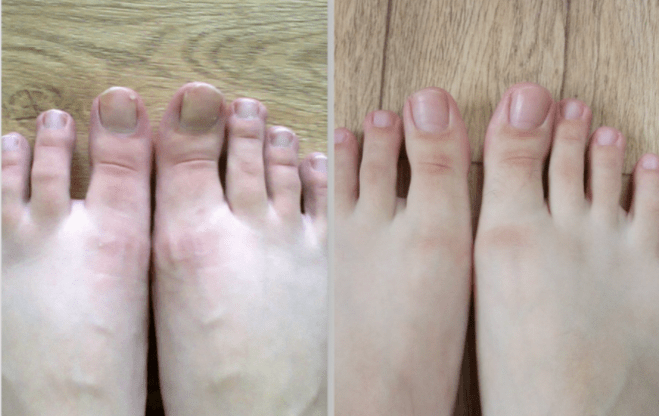
There is a special but very common representative of mycosis, toenail fungus, which is an area of the human body that is often susceptible to fungal infection. Very often, a child is diagnosed with a fungal infection on the leg, just as often adults suffer from this disease. About 27% of the European population has problems due to onychomycosis.
Professional diagnosis and treatment of nail fungus is carried out in clinics such as Prima Derm, where a doctor, a podiatrist and laboratory tests will help determine the stage of the disease, its type and the type of local lesion. Onychomycosis is a serious disease that leads to serious consequences and there is no doubt about the need for treatment.
Types of onychomycosis (nail fungus)

Before starting treatment, it is necessary to diagnose which type of fungus affects the nails and then prescribe therapy and take measures. To get better acquainted with this not very pleasant disease, you need to consider all types of nail fungus; to do this, we will divide them into species depending on location and location, as well as those more familiar according to medical classification.
- Distally, damage to the free edge of the nail. Possibly as a consequence of onycholysis or its instigation;
- Lateral, when the lateral part of the nail is affected with subsequent discomfort. It can follow an ingrown toenail;
- Proximal. The back of the nail is affected. And the deeper the lesion is from the edge, the more difficult it is to treat and restore the nail;
- In total. Here the word itself speaks for itself. The entire nail is affected with the nearby cuticle tissue.
There are also several types of onychomycosis on the legs, the disease is divided according to the symptoms and how the fungus looks.
Normotrophic onychomycosis
One of the initial stages of mild nail damage, but with clear signs of fungal infection.
- The presence of itching in the area of the fingernails;
- Change in nail color;
- Spots and streaks can be one of the symptoms.
The treatment method is local and curative, with possible preservation of the integrity of the nail plate and the shape of the nail. Prevention includes stimulation of the immune system, fresh air, good nutrition and elimination of bad habits.
Hypertrophic
Here the damage to the nail is greater. The existing nail can also be renewed, but for a longer period. At this stage, the disease starts to really bother, and the patient is interested in what is onychomycosis.
- Not only does the color of the nail change, but it also becomes dull;
- The luster is lost;
- Thickening and deformation are likely, such changes are more common in adults;
- The process of destroying the nail plate begins.
Mechanical removal of some affected areas is more likely. Intervention with drugs is already mandatory, and the application of local and course treatment will be prescribed by the doctor.
Onycholithic
Or as they call it atrophic. Judging by the name, it is clear that there is partial or complete atrophy of the nail from the fingers. Thus, onychomycosis of the nails manifests itself in the last stage of development, when the treatment is already longer, and the result will not be visible soon.
Unfortunately, after losing a nail, recovery takes a long time and the procedure is extremely painful. At this stage, the disease must be comprehensively treated using immunomodulatory therapy.
To determine the type of onychomycosis and its stage of development, it is recommended to undergo tests and consult a podiatrist. A professional approach to diagnostics will help you choose the right treatment algorithm and the necessary therapeutic and aesthetic measures.
Causes of toenail fungus
It is difficult to list all the causes of nail fungus, but we can list the most common situations that lead to this disease. And the main causes of onychomycosis are direct infection from the carrier and low immunity.
- Wearing tight shoes and insufficient ventilation causes the development of pathogens. And the treatment of nail fungus starts with changing your shoes to more suitable ones;
- Manicure. Decorative varnishes and gels are applied to the nail layer, improper application leads to peeling of the coating and the development of fungi and other bacteria under the gel;
- Unfavorable working conditions, living conditions and constant exposure to the greenhouse atmosphere, with minimal hygiene;
- Hormonal imbalance and disorders of the thyroid gland and adrenal glands;
- Taking antibiotics. The doctor should take this point into account and immediately prescribe antifungal drugs together with antibacterial drug therapy;
- Low immunity and immunological diseases, one of the first signs of reduced immunity are fungi;
- Previous serious illnesses. Low immunity and a weakened body are not resistant to fungi at all;
- Stress and psychological problems and disorders, it also reduces immunity quite significantly;
- Mechanical damage to the nail or trauma that disrupts the integrity of the nail plate.

Here are the main causes of toenail fungus. If you follow proper personal hygiene and precautions, you can avoid this unpleasant infection. Also avoid going to public places without special footwear, namely: spa salons, swimming pools, saunas, gyms, changing rooms in public places, as well as public showers.























